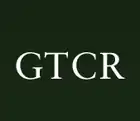GTCR
GTCR LLC is a Chicago, Illinois-based private equity firm focused on leveraged buyout, leveraged recapitalization, growth capital and rollup transactions. The firm principally invests in high-growth industries, including financial services & technology, healthcare, information services & technology, and growth business services.
 | |
 Headquarters at 300 North LaSalle in Chicago | |
| Type | Private |
|---|---|
| Industry | Private equity |
| Founded | 1980 |
| Founders |
|
| Headquarters | 300 North LaSalle Chicago, Illinois, United States |
| Products | Leveraged buyout, Rollup |
| AUM | US$35 billion (2023) |
Number of employees | 154 (2023) |
| Website | gtcr |
Since 1980, GTCR has reportedly invested more than $15 billion in over 200 companies.[1] As of 2021, the firm has more than 80 employees, including over 40 investment professionals.
History

The company was founded in 1980 as Golder Thoma & Co. by Stanley Golder, Carl Thoma, and Bryan Cressey.[2] In the 1970s, Golder built the private equity program at First Chicago Corp.[3] where he is noted primarily for backing Federal Express and for efforts as chairman of the National Venture Capital Association and the National Association of Small Business Investment Companies to change federal laws allowing pensions to invest in private equity.[4][5] Golder Thoma & Cressey received much of its initial funding from William M. Blair and upon leaving First Chicago, Golder was replaced by John A. Canning, Jr. who would go on to found rival Chicago private equity firm Madison Dearborn.
| History of private equity and venture capital |
|---|
.jpg.webp) |
| Early history |
| (origins of modern private equity) |
| The 1980s |
| (leveraged buyout boom) |
| The 1990s |
| (leveraged buyout and the venture capital bubble) |
| The 2000s |
| (dot-com bubble to the credit crunch) |
| The 2010s |
| (expansion) |
| The 2020s |
| (COVID-19 recession) |
The firm became Golder Thoma & Cressey in 1984, and with the promotion of Bruce Rauner to partner the firm would come to be known as Golder, Thoma, Cressey, Rauner, Inc. (GTCR), although it would still often be referred to as Golder Thoma.[6]
In 1998, disagreements between the senior partners led Golder, Thoma, Cressey, Rauner, Inc. split into two private equity firms. Both firms continue to invest primarily through consolidations of specific industries, referred to as roll-ups:
- GTCR Golder Rauner, (Stanley Golder and Bruce Rauner), the private equity firm, based in Chicago, now known as GTCR. GTCR founder Stanley Golder died in 2000 and lead partner Bruce Rauner retired in 2012. Today the firm is led by several senior partners, including Collin Roche, Dean Mihas, Craig Bondy and David Donnini.[7]
- Thoma Cressey, (Carl Thoma and Bryan Cressey) based in Chicago and San Francisco. Thoma Cressey would be renamed Thoma Cressey Bravo to reflect the growing role of partner Orlando Bravo. In 2008, Bryan Cressey left Thoma Cressey Bravo with several investment professionals to form Cressey & Co. a healthcare-focused private equity firm.[8][9] Thoma Cressey Bravo became Thoma Bravo after Cressey’s departure, led by managing partners Carl Thoma, Orlando Bravo, Lee Mitchell and Scott Crabill. The firm closed its 9th fund in March 2009 with $822.5 million.[10]
Investment funds
GTCR invests through a series of private limited partnerships and its investors include a variety of pension funds (e.g., Washington State Investment Board,[11] Pennsylvania State Employee's Retirement System[12]) endowments and other institutional investors.
Following its separation from Thoma Cressey (discussed above), GTCR has raised seven private equity funds totaling $20 billion in limited partner commitments:
Acquisitions
In August 2023, it was announced GTCR had acquired the Basingstoke and Paris-headquartered compliance and supply chain management software platform, Once For All, from Warburg Pincus for an undisclosed amount.[16]
In September 2023, it was announced GTCR had acquired the Fairfield, Connecticut-based foundation software provider for private foundations and charitable advisors, Foundation Source.[17]
External links
- GTCR (official website)
References
- "About GTCR" Archived 2014-02-16 at the Wayback Machine, company webpage
- "Newspapers.com search". Chicago Tribune. Retrieved 2020-09-21.
- Today part of JPMorgan Chase through its acquisition of Bank One
- In 1978, the US Labor Department relaxed certain of the ERISA restrictions, under the "prudent man rule," a fiduciary responsibility of investment managers under ERISA. Under the original application, each investment was expected to adhere to risk standards on its own merits, limiting the ability of investment managers to make any investments deemed potentially risky. Under the revised 1978 interpretation, the concept of portfolio diversification of risk, measuring risk at the aggregate portfolio level rather than the investment level to satisfy fiduciary standards would also be accepted.
- Private Equity Pioneer Golder Dies. Buyouts, January 24, 2000. A cached version of the article can be found here.
- Stanley C. Golder Archived 2007-02-23 at the Wayback Machine, a donor profile at the UIUC website
- Rauner makes it official, retires from GTCR, an article in Crain's Chicago Business dated October 19, 2012
- "Dealmakers' boot camp; Golder Thoma: A buyout industry proving ground", Crain's Chicago Business, September, 2004 by Steve Daniels
- "Personality Profile: Cressey Takes Specialization To The Next Level." Buyouts, June 23, 2008
- "Thoma Bravo Completes Fundraising" Bloomberg, March 16, 2009
- Washington State Investment Board Private Equity IRR Report Archived 2008-05-13 at the Wayback Machine
- Pennsylvania State Employee's Retirement System Detailed Holding Information
- "Press Release".
- "Press Release". Archived from the original on 2014-03-05.
- GTCR. "GTCR Closes $5.25 Billion Buyout Fund". www.prnewswire.com (Press release). Retrieved 2019-01-28.
- Media, Insider (2023-08-30). "GTCR completes Once For All acquisition". Insider Media Ltd. Retrieved 2023-08-30.
- FinSMEs (2023-09-14). "GTCR Acquires Foundation Source". FinSMEs. Retrieved 2023-09-14.
